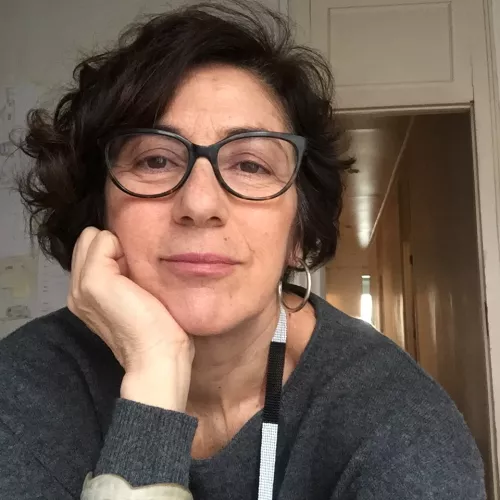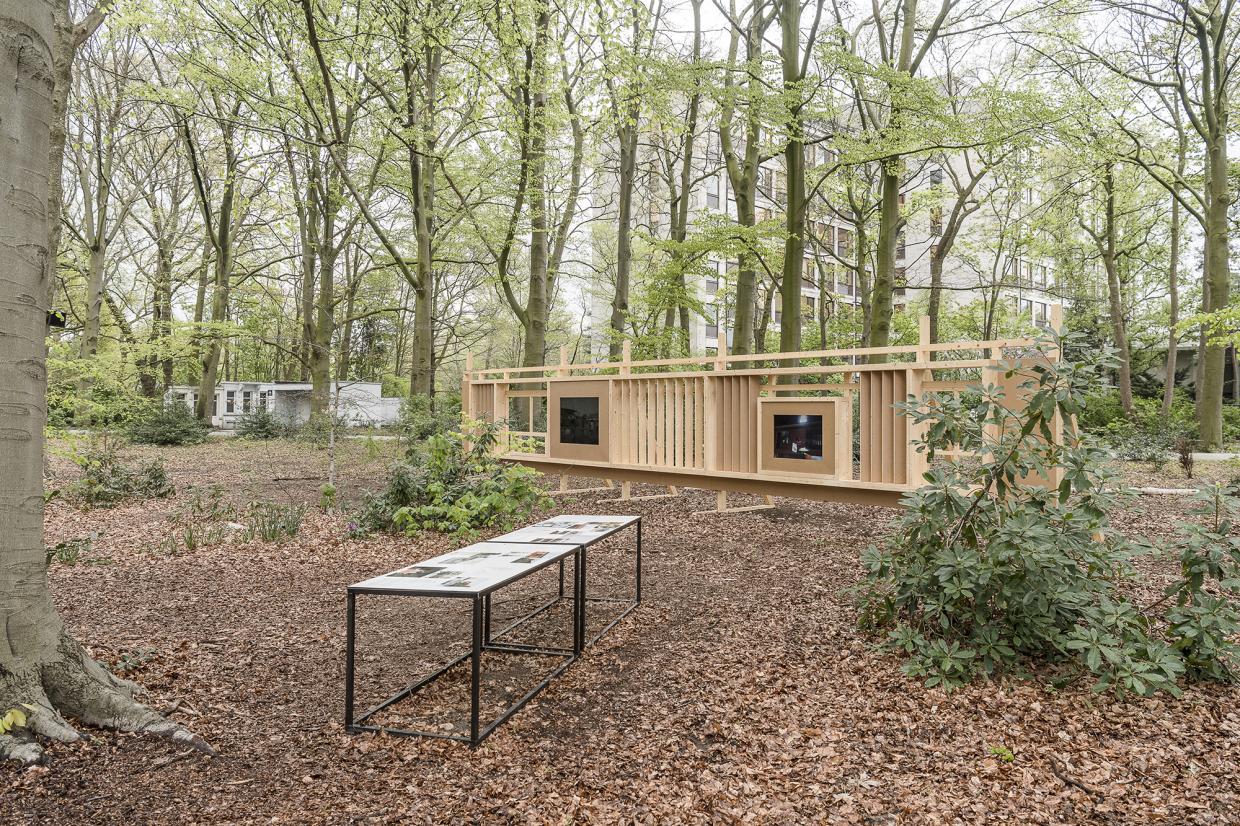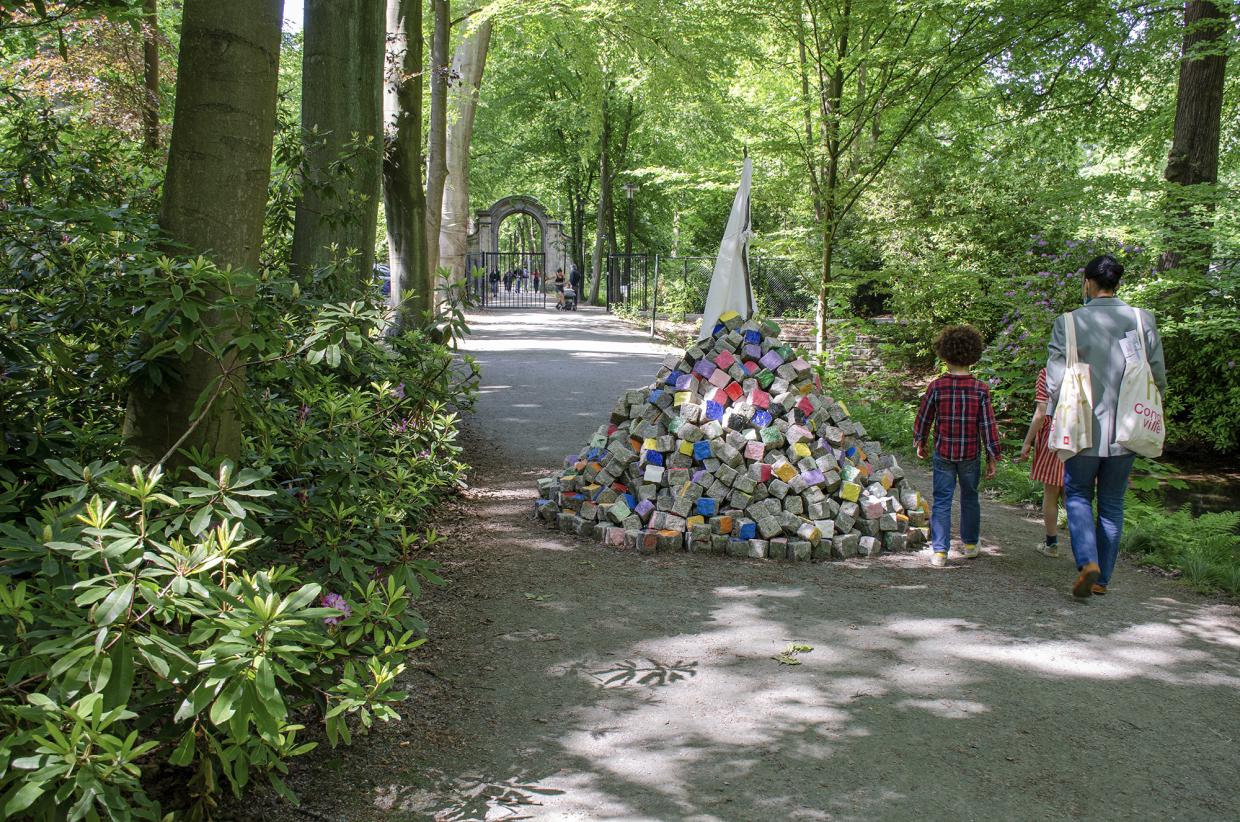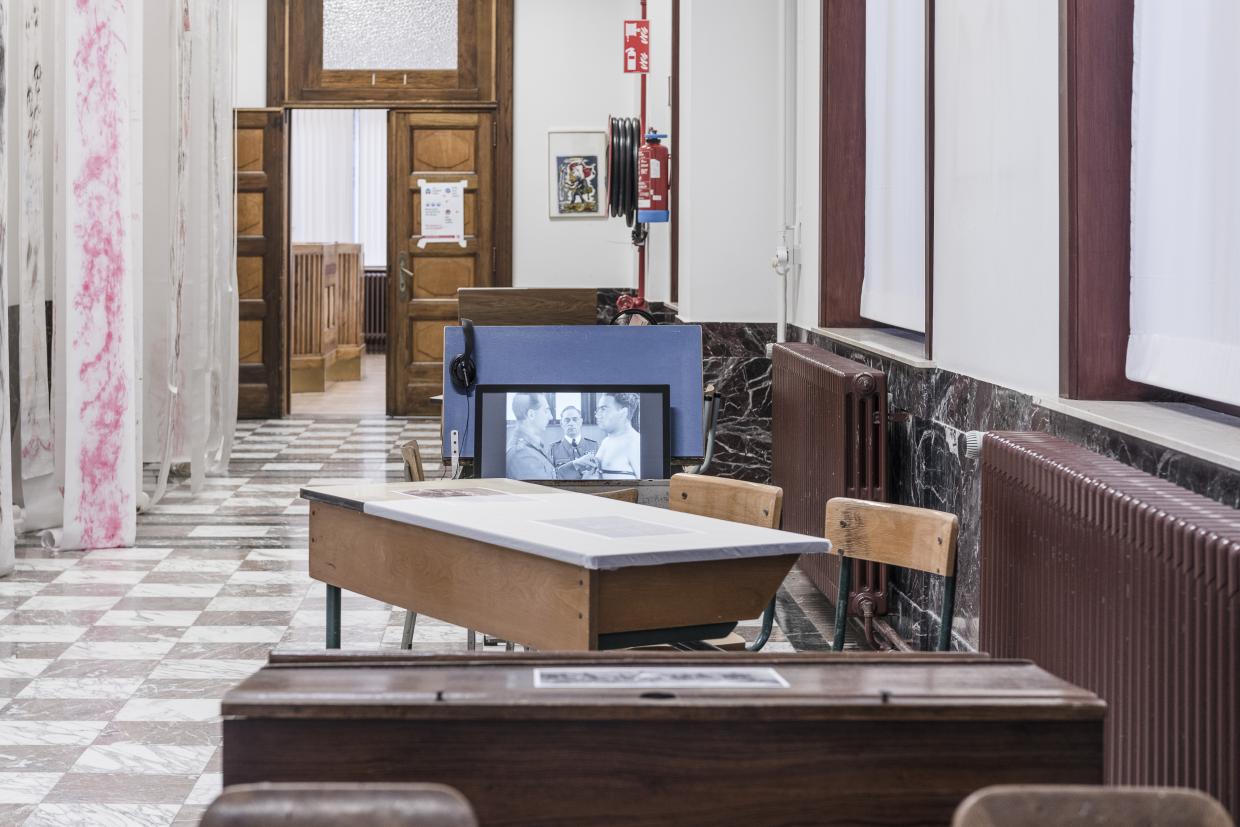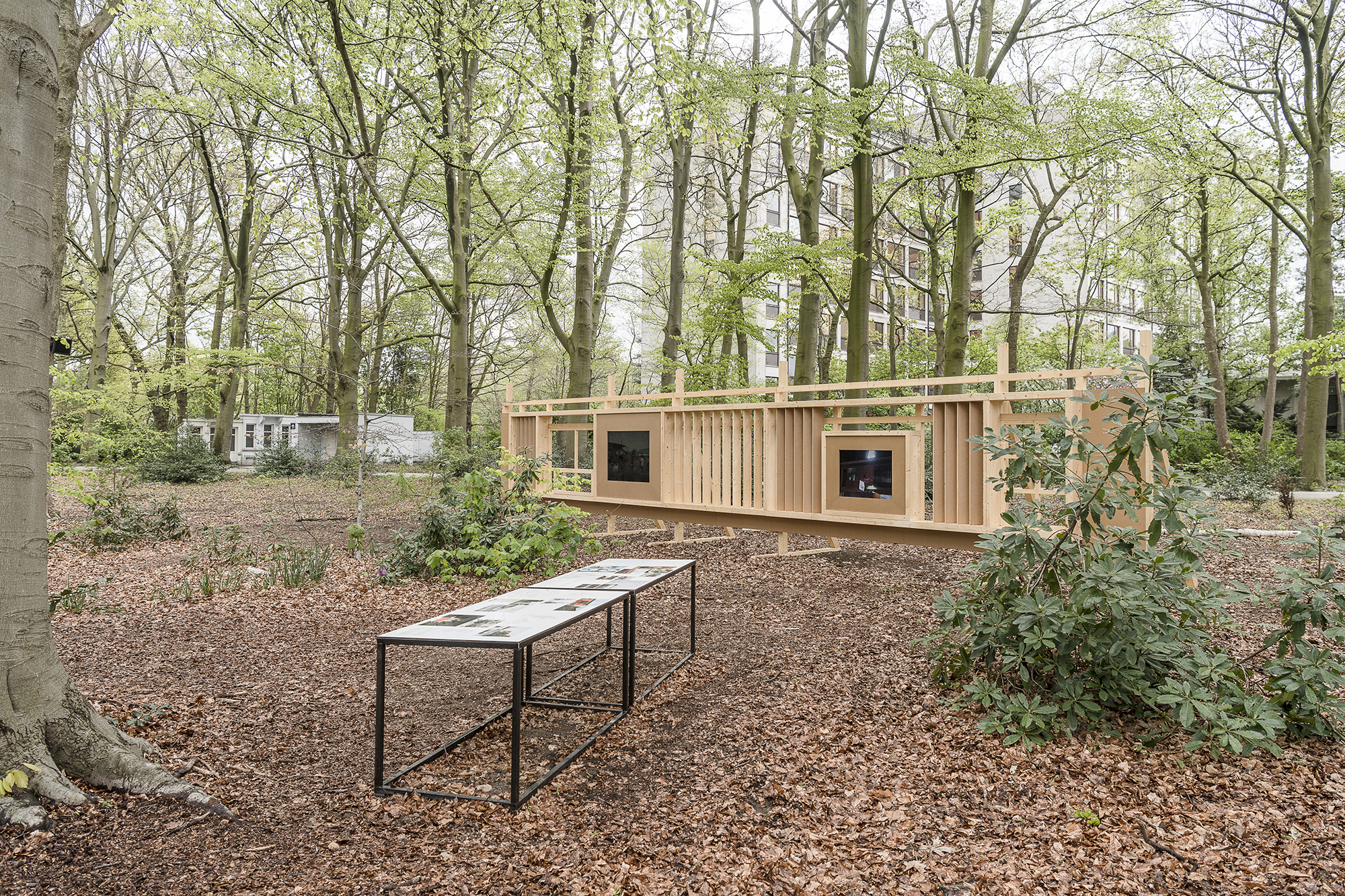
A lost utopia
Ângela Ferreira reflecting on 'Independence cha cha'
"In spite of the fact that my work primarily portrays lost utopias, I am also interested in envisioning new strategies for dealing with our past." Artist Ângela Ferreira engaged in a conversation with curator Pieter Boons about her Congoville art installation 'Independence cha cha'.
Imperialist myths
Pieter Boons: The first questions discuss the exhibition Congoville. According to Sandrine Colard’s concept, Congoville represents the dense urban layer that results from the colonial history in Belgium: its buildings, monuments, imperial myths, and its Africandescendant population. What was the first thing that came to mind while reading the title of the show?
Ângela Ferreira: Searching online for traces of Congoville, I came across the song produced by the Liberian music band ‘The Soulful Dynamics’ in 1972, entitled “Coconuts from Congoville”. Their music, and this song especially, is echoing a strange kind of poppy exoticism greedily working with clichés of coconuts and dancing cheerful black people performing for an overly white audience. I really wonder how people would react to the use of this kind of stereotype today.
On the other hand Congoville sounds to me like a postcolonial constructed title that seeks a connection to another urban space which is the bidonville; a particularly evocative term that carries with it a history of racial and economic issues. In France, the bidonvilles around Paris were very important when Algeria was struggling for independence. They were situated at the crossroads between the colonial legacy and constraints associated with the Algerian War.
So the bidonville is not only phonetically but also conceptually connected to Congoville: They both share a history of liberation, and they highlight societal problems as the result of harsh colonial regimes.
In her essay Sandine Colard speaks about “unlearning an imperial mindset”. What can this mean to you?
For myself unlearning can only happen through my art practice. I’m looking at the history of colonialism in general and specifically at the pivotal moment where colonialism is followed by a new independence. I try to understand the complexities and the horrors of the colonial project, and I proceed to imagine what we, as Africans, don’t want our continent to be.
Through my own work, I try to decipher colonial pasts and open up avenues for thinking in another way. My work doesn’t intend to offer solutions, but at least it offers tools that could enable us to build a new approach for our continent. Maybe this could be the start of a so-called unlearning process.
Strangely enough, unlearning is not becoming less educated; on the contrary, it has a lot to do with criticality and reflexivity.
Beyond 'fashion'
Congoville unfolds the untold colonial history of the ‘Middelheim’ in a vast exhibition that will run for almost five months. What could be the longterm preferred impact of this project, or how can we consolidate the knowledge that will appear?
Nowadays there are a lot of ‘decolonization’ projects. It has turned into a ‘trend’ although we must recognize the positive effects as well; people are willing to pay attention to postcolonial issues. But when I look at my own work, which has been dealing with this topic since 1991, primarily, I cannot allow it to become appropriated by a trend.
Thirty years ago, all we hoped for was that more people became familiar with the postcolonial discourse and that ‘the word’ would spread. And it has spread, so much so that it became fashion. But how do we carry on? A lot of artists are posing this question right now. My approach is that you have to keep the discourse serious, and you don’t allow things to get trendy.
Also, institutions can play a role here, as I really believe that institutions like yours should implement projects like Congoville throughout their program on a regular basis. It’s also important to unfold the current decolonization debate in its own right, for instance, by bringing homage to its pioneers. This ‘fashion’ has its own long history, and all the spreading is fantastic, but we have to invest seriously in the discourse as well.
Can you share with us a visual representation (or an image) of the concept of Congoville?
This reminds me of one of the first works I ever made in 1991, "Sites and Services", every word of the concept of Congoville applies, except for the word ‘Belgium’. The work depicts an urbanization plan run by South Africa’s apartheid government where they provided sites and toilets to dwellers in order for them to build informal housing.
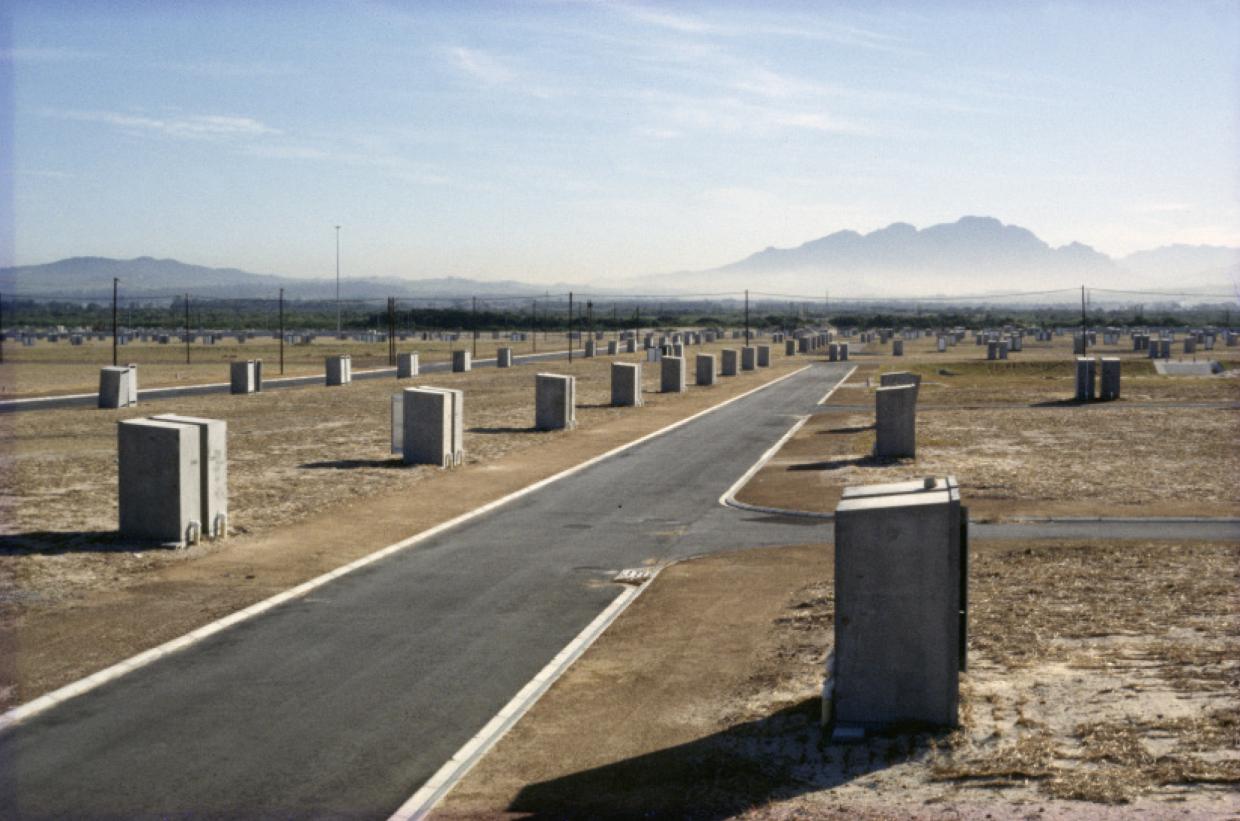
Independence cha cha
To continue, let’s talk about your work in the Congoville exhibition. What are the ideas behind the works you show here?
Independence cha cha is a rather complex work, as it is the second phase of a long process, which started in Lubumbashi (DRC) in 2013. The first iteration of the work was presented at the Third Biennial of Lubumbashi.
I used a modernist 1950s building, designed by the Belgian architect Claude Strebelle, as a plinth for a sculpture and I thereby transformed the building into a public artwork using performance and projection.
The sculpture on the roof of the (still up and running) gas station is inspired by both the work of Dan Flavin and the Russian constructivist Vladimir Tatlin, who created a (never realized) tower monument for the revolution to challenge the Eiffel Tower as modernity’s famous symbol.
The combination of my sculpture and the modernist building evokes a strange encounter where ideologies clash and fail. On the opening night, two young Lushois were invited to perform a traditional mining song, unfolding the fears and horrors of mining activities that still dominate the economic and urbanistic conditions of nowadays Lubumbashi.
Back in Lisbon, I developed a next, less site-specific, version of the work: It copies the façade of Strebelle’s building in wood, and it implements two videos. This version which we are working on now, for the first time presented as an outdoor variant, can be seen in Middelheim Museum.
The first video is a recording of the performance of the opening night of the Lubumbashi Biennial. The second video depicts the hotel band of Lubumbashi’s Park Hotel playing the famous Indépendance Cha Cha. The musicians perform the song in its saddest and most depressing way, mirroring the exhaustion and failure of the independence project for Congo and other African nations.
Although the work unfolds several lost utopias, I am also interested in finding or imagining new utopias and strategies to deal with our past.
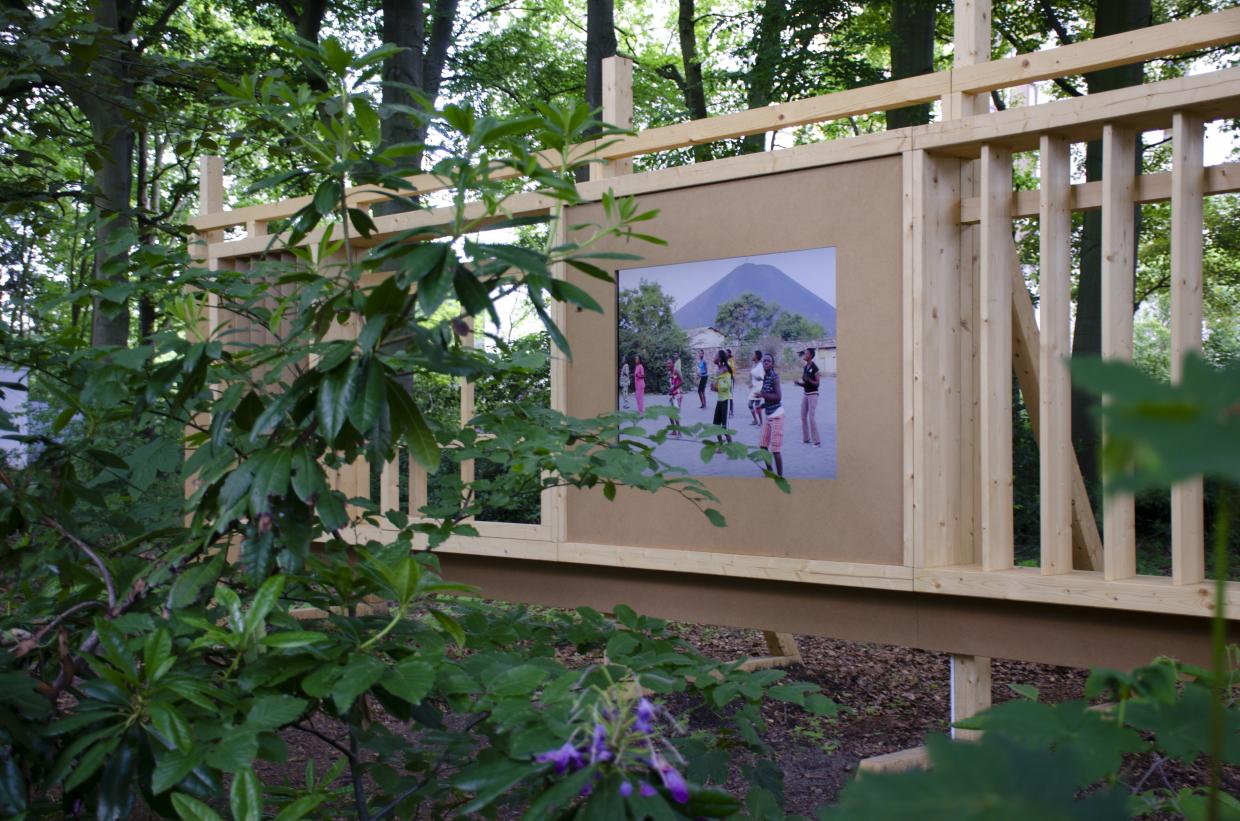
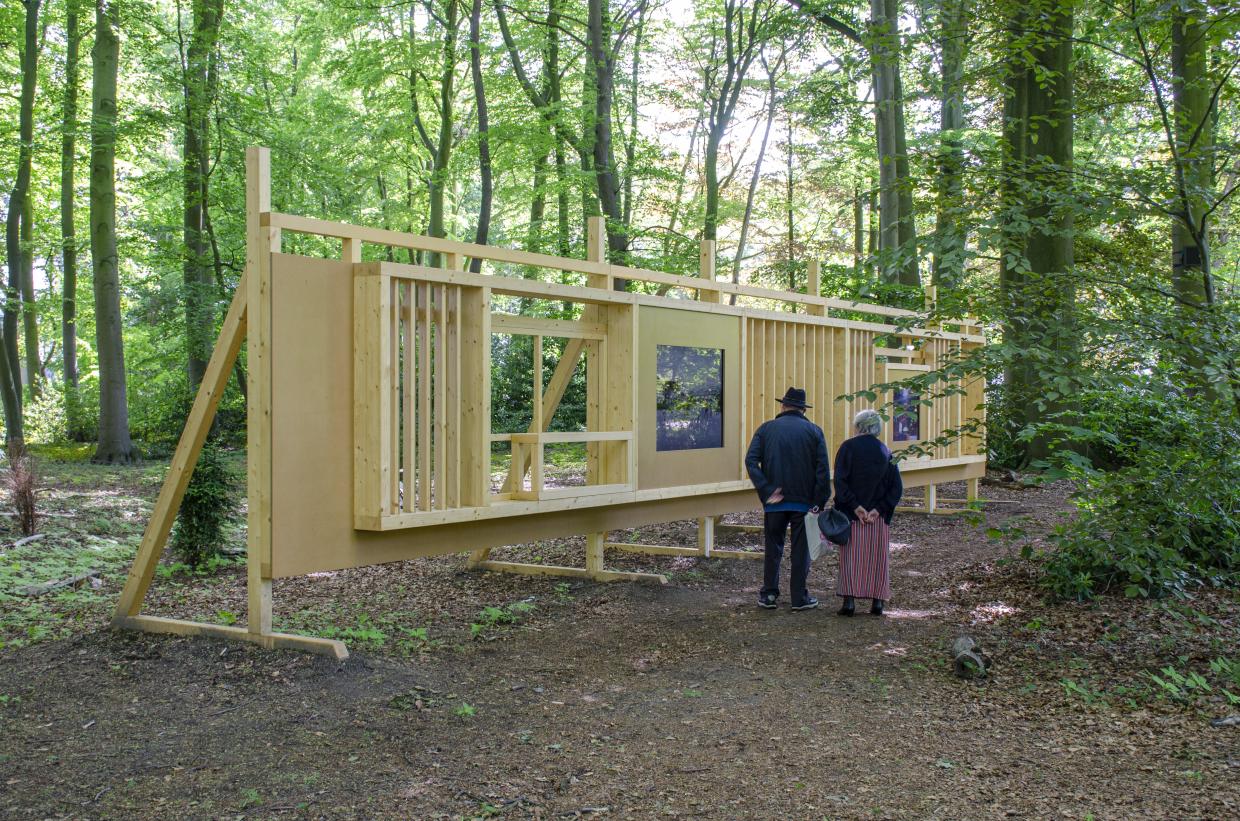
Decolonization: a long history
What position does your work (or your oeuvre) take in the more general current theme of decolonization?
The first time I’ve heard the word decolonization was around 1990, coming from the Kenyan writer Ngũgĩ wa Thiong’o’s Decolonising the Mind: The Politics of Language in African Literature (1986).
People often think decolonization is a new word, although it has a long history. Firstly, artists and thinkers started using the term ‘postcolonial discourse’ in the eighties to differ from the colonial discourse. At that time, there was a communal ambition for a liberation, and we wanted to advance in time.
At the coming of the 21st century, people were getting tired of this postcolonial discourse as a term because I think it did not deliver what was hoped for.
So I guess people started, cleverly, looking for a new word that was more pro-active and more regenerative. Decolonization is just another approach on liberating yourself from racism, the burdens of colonialism, etc … Actually my practice is nothing but that.
To what thinking or writing is your work related, and why?
The African thinker that has occupied most of my recent time is probably Achilles Mbembe. But funnily enough, I’ve just finished rereading Ngũgĩ wa Thiong’o’s Decolonising the Mind: The Politics of Language in African Literature. He wrote this book just before I started my artistic practice, and I wanted to refresh the principal ideas on the term decolonization.
He explains why African writers shouldn’t write in colonial languages, which is an interesting and courageous proposal. The importance of ideas like this is to understand how structures like language are all colonial tools, difficult and very complex to unpack.
A different kind of history
As this exhibition has its starting point in a shared colonial history, how do you engage with the concept of time in this work, or in your practice? How can we use the past as a point of reference to move into a future of which nothing is known?
First of all I would like to say that assuming we know the past is an error. I always wonder why I dive into the past when I do research. But every time I realize how little I know or even worse, I realize how wrongly I know of the past.
At school I learned history from a colonial book, and now as an adult I have developed some kind of criticality that made me understand that a lot of things I learned were probably wrong. But how do you balance that, and where do you get that ‘other’ knowledge that you need to complement your wisdom?
And only when you start building another kind of history, you realize that different things and thoughts would have come to you. Maybe you would have become a different person. It’s clear that the relationship between past and present is very rich and important.
The relation between the past and the future is more difficult to grasp. But when thinking about the future, I’m fascinated by Afrofuturism as a strong strategy for liberation. Imagine the power of a radical jump from one situation to another to emancipate your life into a better society. Although utopian, it’s a perfectly useful approach. However, my problem is that I have found that much of the so-called Afrofuturist art that is being produced is disappointing. And that realization makes me think again and reequate the idea of Afrofuturism as a strategy.
Art as a strategy for healing
How do you engage with art as a possible strategy for healing?
If I would say that art can heal, then one might presume that I understand how art influences society. Unfortunately I don’t. I can only speak for myself and I know, art is important and vital, but I don’t understand how it permeates our society.
For sure, my artistic practice saved me or has healed me, but I don’t have a solution for the burdens of the past. I can only hope my work can be read as a strategy for healing, but how do I know if it heals?
Which book(s) do you suggest to read within the context of your work in this exhibition?
Angela Davis, An Autobiography (New York: International Publishers, 1996).
Middelheim Museum Curator Pieter Boons in conversation with Ângela Ferreira.
This text also appears in the publication accompanying the exhibition.
About Ângela Ferreira
Ângela Ferreira was born in 1958 in Maputo, Mozambique. In 1975 she settled in Cape Town, South Africa, where she studied sculpture at Michaelis School of Fine Arts, obtaining a Master in Fine Arts degree in 1983. In the early 1990s she moved to Lisbon, where she has been a teacher at the School of Fine Arts of the University of Lisbon since 2003.
Ferreira’s sculptural practice has been the starting point leading to installations which combine other media, such as videos, drawings, photographs, and written texts. Through thorough research and frequent use of architectural elements and structures, Ferreira’s practice explores the effects that colonialism and post-colonialism have had on contemporary society.
Exhibitions
The artist’s work has been shown in numerous exhibitions around the world. Notable among her recent solo exhibitions are:
- Murais, Makeba e Moçambique, Arte d’Gema Gallery, (Maputo, 2019)
- Ângeila Ferreira. Pouco a Pouco, CGAC (Santiago de Compostela, 2019)
- Zip Zap and Zumbi, DePaul Art Museum (Chicago, 2017)
- Messy Colonialism, Wild Decolonization, Zona Maco SUR (Mexico City, 2015)
- Political Cameras, Stills (Edinburgh, 2013)
- Ângela Ferreira–Stone Free”, Marlborough Contemporary (London, 2012).
In 2007 Ferreira represented Portugal at the 52nd Venice Biennale with Maison Tropicale. Some of her recent group exhibitions include:
- After the End: Timing Socialism in Contemporary African Art, Wallach Art Gallery, Columbia University (New York, 2019)
- 12th Gwanju Biennale / Imagined Borders (Gwanju, South Korea, 2018)
- 10th Taipei Biennale / Gestures and Archives of the Present, Genealogies of the Future (Taipei, Taiwan, 2016)
- 3rd Lubumbashi Biennial (2013); Between Walls and Windows, Haus der Kulturen der Welt (Berlin, 2012)
- Appropriated Landscapes, The Walther Collection (Neu-Ulm, Germany, 2011)
- Monument und Utopia II, Steirischer Herbst (Graz, Austria, 2010)
- Modernologies, Museum of Modern Art (Warsaw, 2010) / MACBA (Barcelona, 2009)
